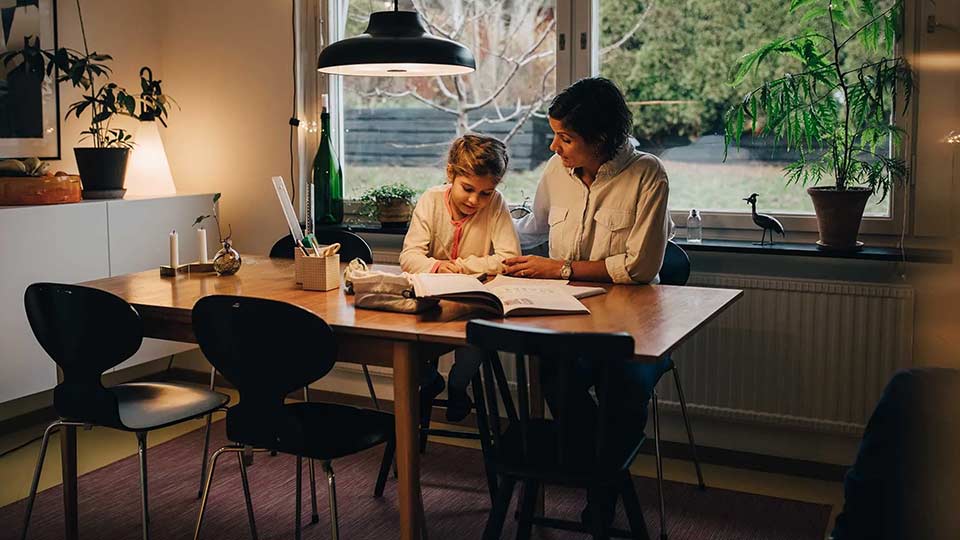Ergonomics for Kids: 3 Tips for Adjusting to Virtual School
Posted on September 11, 2020 | in Ergonomics

It’s that time of the year again when parents are gearing up for their kids’ return to school, but of course, that looks very different this year during the global pandemic. Just as adults have had to adapt to working from their homes for the past several months, parents are now trying to help their children get through about 8 hours of schoolwork from their dining room tables. Luckily, the principles of ergonomics can be applied to children’s work spaces too. Here are three tips for setting up a virtual school that will prepare children to succeed as well as protect their growing bodies from awkward postures.
1. Choose the Right Equipment
Every new workspace setup starts with the equipment. In this case, it is probably a laptop that your child uses to communicate with teachers and submit assignments. While it may not be necessary for all children due to their smaller stature, if you see your child bending his or her neck to stare at the screen, then a great place to start is providing an external keyboard and mouse. Some of you may even have old equipment lying around the house! With these tools and a stack of books under the laptop, you can raise the monitor and protect your child’s neck from long-term strain. Also, school might start before the sun, so place a lamp, preferably with an LED bulb, on top of the workspace to minimize eye strain from poor lighting.
Though it may not be as comfortable, choose a real chair over the couch for more mentally-taxing classroom work. This will promote proper back posture during computer-based work. If you have one available, select a smaller, child-sized chair that will easily allow sitting with the knees at ninety degrees and feet flat on the floor. However, if you need to adjust a full-sized chair to fit smaller body dimensions, just use pillows on the seat and chair back, along with a box under the feet to fully support the body.
2. Organize the Environment
A designated space for classroom work requires organized cabinetry or buckets to minimize reach distances and provide easy access to frequently used materials like pencils and paper. By keeping physical clutter to a minimum, not only will you minimize how much assistance they need to find their materials or access those items, but you will also reduce the number of objects that can distract them from schoolwork. This space will also foster a routine for school days that encourages your child to stay in a more productive mindset while in the “classroom.”
3. Don’t Forget to Move
Lastly, make sure you continue to encourage your child to get up and move throughout the day. The added motion will promote changing postures and relieve the physical strain of sitting still for long periods. Moving regularly is also great for managing a child’s attention span and improving concentration. Consider setting visible timers for 1- to 2-hour intervals. When the timer goes off, allow your child 10 to 15 minutes to run around, get a drink or snack, or maybe even have a mini dance party to a favorite song! Then they can return to their schoolwork physically and mentally refreshed.
Need more tips for your own home office? Check out our work-from-home-toolbox.